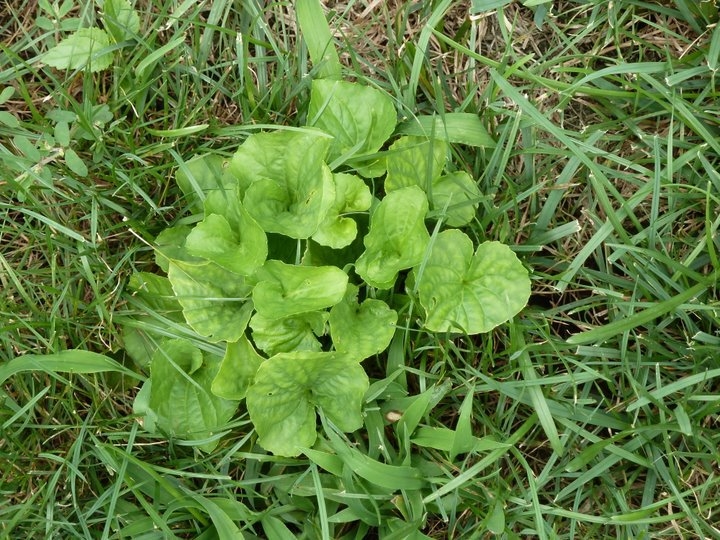Never "Weed" the Garden, Only Harvest
This growing season I've set set myself some goals : I'm going to improve my gardening skills! As I write that, I realize that it's not a very substantial goal because I'm not a very good gardener. This may come as a surprise to many, but there's a good reason that I've focused my work on wild plants. They can grow without a need for me to intervene.This year though, I really want to grow some food. I've been tenderly caring for a handful of seedlings, both traditional food plants and medicinals, for the last 6 weeks or so.This past weekend, I took some of them out to put in the garden. Yay! But when I got to the garden... well, let's just say that it was pretty full already. Full of what most gardeners call "weeds."As I looked through the garden I realized that many of the self-sufficient plants that populated my garden space we either edible or medicinal (or both). This created a dilemma for me. How do I decide to kill these plants that are already so happy and healthy, just to replace them with plants that I may very well kill in the near future?? (This has been a stumbling block for me in the past too.)But this time, I had reconciled my angst by deciding that I will NOT weed. I would ONLY HARVEST and then feast.
As I write that, I realize that it's not a very substantial goal because I'm not a very good gardener. This may come as a surprise to many, but there's a good reason that I've focused my work on wild plants. They can grow without a need for me to intervene.This year though, I really want to grow some food. I've been tenderly caring for a handful of seedlings, both traditional food plants and medicinals, for the last 6 weeks or so.This past weekend, I took some of them out to put in the garden. Yay! But when I got to the garden... well, let's just say that it was pretty full already. Full of what most gardeners call "weeds."As I looked through the garden I realized that many of the self-sufficient plants that populated my garden space we either edible or medicinal (or both). This created a dilemma for me. How do I decide to kill these plants that are already so happy and healthy, just to replace them with plants that I may very well kill in the near future?? (This has been a stumbling block for me in the past too.)But this time, I had reconciled my angst by deciding that I will NOT weed. I would ONLY HARVEST and then feast. So I pulled out a bunch of plants, put in my food crops, and took a huge bowl of wild greens into my kitchen.Here's what I harvested : burdock and thistle roots, chickweed, sheppard's purse, pigweed, lots of violet leaves, common mallow, dandelion, and red clover.Most of these went into dinner on Saturday night, but the burdock roots went into an experimental home brew (beer) with an big bunch of nettle stems (left over from my recent harvest) and some cleavers.I don't have much to report just yet on the beer, it'll take a few weeks before I know how well it's worked. I'll certainly have more to share on this topic in articles to come.But our dinner that night was AMAZING! My 7 year old ate 3 plates of fried rice that was full of wild greens.Now if you're wondering about the recipe I used, I'm sorry to say that I can't actually say. I don't use recipes very often and this dish was mostly about using up some leftovers. But I will offer some tips on adding wild foods into your dishes.The first consideration when cooking wild greens, especially if you want kids to eat them, is to keep the bitter herbs to a minimum. So, I used mostly violet, mallow, chickweed and pigweed leaves and kept the dandelion leaves to a minimum. These leaves are mild in flavour. Medicinally, all three are demulcent which means they create a mucilaginous consistency somewhat like egg-whites. Since the last ingredient in my fried rice is a couple of eggs, this seemed to harmonize pretty well.I kept the red clover leaves for the salad. The reason for this is because heat (ie. cooking) increases the bitter flavour of whatever you're cooking. (I once steamed a whole bunch of clover for a party I was hosting and only 2 of us at the table could stand the incredible bitterness.)The second tip is to remove any bits that are remotely woody. Don't use the stems unless they're quite soft. In this case, I took the leaves off the sheppard's purse and used the seed pods (shaped somewhat like a purse which gives this plant it's common name) as a garnish. These were still too tough to be very pleasant, unless you really enjoy picking stem-y bits out of your teeth.So, I took off most of the leaf stems and cut the leaves up into smallish strips. I figured this would make it a bit easier to "hide" in the rice and other veggies.My third tip is related to the second. Knowing that a wild plant is "edible" isn't the end of the story. It helps a great deal to know about the life cycle of the plant. For example, most of the chickweed in my garden had gone to seed already. It got lots of sun exposure over the last month which made it stringy and sorta tough. I had to find the plants hiding in the shade to get the soft and succulent chickweed which is such a delight to eat.It's the same with bitter herbs. The younger and smaller the leaves are, the less bitter they tend to be. Ideally, gathering them before they 'bolt' (just like lettuce) or before they go to flower will give a more palatable flavour.My last tip is to find a way to befriend the very healthy flavour of bitter. The western diet has chosen sweet and salty in place of our more traditional diet which, for most of human history, has included many many bitters. The standard western diet creates many digestive disorders because of this.So, if you're a gardener who wants to know more about the "weeds" in your garden so that you too can harvest instead of weeding, I invite you to check out my upcoming Herb Walk Series: See the City GREEN. Even if you're not a gardener, like me, but still want to learn to identify some of these edible weeds, check out these walks happening this June 6, 7 and 8.To find out more about these plant identification walks --> click here Happy foraging!garliq
So I pulled out a bunch of plants, put in my food crops, and took a huge bowl of wild greens into my kitchen.Here's what I harvested : burdock and thistle roots, chickweed, sheppard's purse, pigweed, lots of violet leaves, common mallow, dandelion, and red clover.Most of these went into dinner on Saturday night, but the burdock roots went into an experimental home brew (beer) with an big bunch of nettle stems (left over from my recent harvest) and some cleavers.I don't have much to report just yet on the beer, it'll take a few weeks before I know how well it's worked. I'll certainly have more to share on this topic in articles to come.But our dinner that night was AMAZING! My 7 year old ate 3 plates of fried rice that was full of wild greens.Now if you're wondering about the recipe I used, I'm sorry to say that I can't actually say. I don't use recipes very often and this dish was mostly about using up some leftovers. But I will offer some tips on adding wild foods into your dishes.The first consideration when cooking wild greens, especially if you want kids to eat them, is to keep the bitter herbs to a minimum. So, I used mostly violet, mallow, chickweed and pigweed leaves and kept the dandelion leaves to a minimum. These leaves are mild in flavour. Medicinally, all three are demulcent which means they create a mucilaginous consistency somewhat like egg-whites. Since the last ingredient in my fried rice is a couple of eggs, this seemed to harmonize pretty well.I kept the red clover leaves for the salad. The reason for this is because heat (ie. cooking) increases the bitter flavour of whatever you're cooking. (I once steamed a whole bunch of clover for a party I was hosting and only 2 of us at the table could stand the incredible bitterness.)The second tip is to remove any bits that are remotely woody. Don't use the stems unless they're quite soft. In this case, I took the leaves off the sheppard's purse and used the seed pods (shaped somewhat like a purse which gives this plant it's common name) as a garnish. These were still too tough to be very pleasant, unless you really enjoy picking stem-y bits out of your teeth.So, I took off most of the leaf stems and cut the leaves up into smallish strips. I figured this would make it a bit easier to "hide" in the rice and other veggies.My third tip is related to the second. Knowing that a wild plant is "edible" isn't the end of the story. It helps a great deal to know about the life cycle of the plant. For example, most of the chickweed in my garden had gone to seed already. It got lots of sun exposure over the last month which made it stringy and sorta tough. I had to find the plants hiding in the shade to get the soft and succulent chickweed which is such a delight to eat.It's the same with bitter herbs. The younger and smaller the leaves are, the less bitter they tend to be. Ideally, gathering them before they 'bolt' (just like lettuce) or before they go to flower will give a more palatable flavour.My last tip is to find a way to befriend the very healthy flavour of bitter. The western diet has chosen sweet and salty in place of our more traditional diet which, for most of human history, has included many many bitters. The standard western diet creates many digestive disorders because of this.So, if you're a gardener who wants to know more about the "weeds" in your garden so that you too can harvest instead of weeding, I invite you to check out my upcoming Herb Walk Series: See the City GREEN. Even if you're not a gardener, like me, but still want to learn to identify some of these edible weeds, check out these walks happening this June 6, 7 and 8.To find out more about these plant identification walks --> click here Happy foraging!garliq